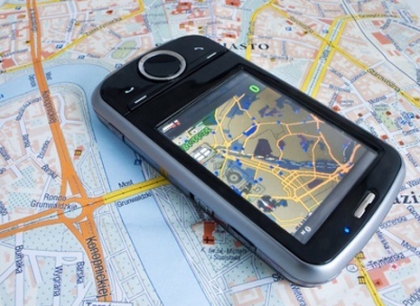This is the third of three blog posts by our managing editor Jeff Binder exploring the concept of sustainable interaction design as put forth by Eli Blevis of the School of Informatics at Indiana University, in a paper entitled Sustainable Interaction Design: Invention & Disposal, Renewal & Reuse.* In the first he reviewed the basis of sustainable interactive design and the second examined the principle of linking invention and disposal.
According to Eli Blevis, that’s the second principle of interaction design -- promoting renewal and reuse. Blevis gives us an example in a familiar product:
“As an example, newly introduced GPS navigation devices that come with all of the maps and mapping software pre-loaded … have displaced older models which required users to download the maps on an as needed basis or mapping applications targeted at PDAs. It may be possible that the appliance metaphor once in peoples' consciousness means that renewal by means of software updates is too onerous a process, since it is not part of the typical cognitive model of an appliance.”
A personal navigation system is a relatively non-essential gadget, says Blevis. However, the GPS device he cites – the Garmin nuvi 350 – has properties that make it both a bane and a boon to sustainable behavior. Among the cons: the device must be connected to a computer to be updated, which may seem like more trouble than just buying a newer model. In addition, following its directives may distract the driver, creating a safety hazard.
Of all the possible positive sustainability impacts – which include shortened driving time due to better directions, as well as the option to reload the device with newer maps – the fact that the GPS allows older vehicles to include the navigation features of newer vehicles is one that Blevis finds most beneficial and the key to consumers’ embracing renewal and reuse:
“The environmental benefits of renewing and reusing older vehicles may possibly outweigh the environmental benefits of substituting old vehicles with newer ones, even when the newer ones use cleaner technologies – the environmental costs of disposal and manufacturing need to be taken into account. Furthermore, if the means of renewal and modernization are available to consumers for some things and consumers come to demand a culture of renewal and reuse, perhaps manufacturers will concentrate on marketing those very same cleaner technologies as updates to existing vehicles rather than incentives for the purchase of the new and the disposal of the old.”
However, one of the most powerful technological allies for renewal and reuse, Blevis points out, is the Internet. One web site, freecycle.org, posts unwanted items to be given away instead of throwing them out, another enables users to get printer cartridges refilled, and still another remanufactures laptop computers for resale – with a warranty. Conceding these efforts are small relative to the stronger trend toward consumption and disposal, Blevis still sees in them a consumer vote of support for sustainable interaction design.
But that support must swell rapidly to stem the tide of invention and disposal that threatens to flood the world with discarded tech devices if other countries follow US patterns of consumption. Determining how to make consumers view restored devices as desirable or more desirable than new products is a part of Blevis’ ongoing work.
“There are aspects of style, status, and self-image that affect such preferences as much as issues of form and function. This seems to be even more true of information appliances than other products, since information appliances have particularly rapid depreciation and face early retirement from service due to frequent obsolescence.”
The key, he sees, is promoting superior functionality for the long run, so the device may change hands and still perform:
“If things are designed and constructed with sufficient quality and modularity, people may be inclined to look after them and selectively update them creating the effect of achieving longevity of use. Furthermore, quality things provide equality of ownership to those who may not be the first owner of such things. This is especially important not just as an issue of renewal & reuse by the affluent, but also as it concerns the conscientious redistribution of older technologies in global terms.”
So in the end, Blevis charges product designers with the responsibility to lead by creating information appliances that can adapt, withstand the test of time, and persuade consumers those features are the true measure of value.
There is at least anecdotal evidence that manufacturers and consumers are getting the message. TeleNav, a Sunnyvale, California-based company, provides software that turns any cell phone into a GPS device – which not only finds new uses for existing devices, but eliminates the need for a dedicated gadget altogether.
---
* -- Blevis, E. (2007). Sustainable interaction design: invention & disposal, renewal & reuse. In Proceedings of the SIGCHI Conference on Human Factors in Computing Systems (San Jose, California, USA, April 28 - May 03, 2007). CHI '07. ACM Press, New York, NY, 503-512.
Paper available for download from the ACM digital library: http://doi.acm.org/10.1145/1240624.1240705
Publications list for Eli Blevis: http://eli.informatics.indiana.edu/selectedpublications.html

